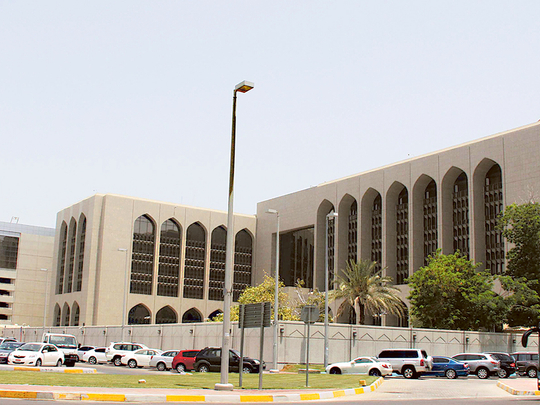
Dubai: The Central Bank of the UAE has announced a set of new regulations on liquidity risk management for the banking sector as part of compliance requirements for the Basel III rules on capital and liquidity requirements for UAE banks, the UAE official news agency WAM reported on Tuesday.
According to circular No. 33/2015, issued on May 27, 2015, all banks must abide by the provisions of these regulations and the guidance manual.
The objective of these regulations is to ensure that liquidity risks are well managed at banks operating in the UAE and are in line with the Basel Committee for Banking Supervision (BCBS) recommendations.
In three articles, the new regulations define the qualitative and quantitative liquidity management frame work for the banks operating in the country.
In quantitative requirements banks are mandated to keep a minimum level of liquid assets to meet sort term liquidity stress. Banks should also structure their funding profile to limit the impact of long term market disruptions.
To achieve these two objectives, the Central Bank requires banks to comply with the prescribed the Eligible Liquid Assets Ratio (ELAR); or move to the Liquidity Coverage Ratio (LCR) as and when approved by the central bank.
Banks approved to move onto the LCR will also be required to comply with the Net Stable Funding Ratio (NSFR) when this ratio comes into effect by 1 January 2018.
ELAR is defined as the percentage set by the Central Bank of the banks’ total liabilities in eligible liquid assets, consisting of items such as account balances at the Central Bank, Physical cash at the bank, Central Bank Certificates of Deposit (CDs)., UAE Federal Government bonds and sukuk.
Eligible securities include the UAE local governments and public sector entities publicly traded debt securities up to 20 per cent of total eligible liquid assets. Foreign, Sovereign debt instruments are limited to 15 per cent.
This ratio will become effective on 1 July 2015. The initial compliance level for this ratio is set at 10 per cent of the total liabilities. The Central Bank will periodically review this ratio.
Banks allowed to move to LCR from 1 January 2016 will follow a 30-day stress based liquidity coverage that will require the bank to be able to survive the stress using a stock of high quality liquid assets.
The LCR requires that banks should always be able to cover the net cash outflow with high quality liquid assets. The Basel III accord requires that the minimum LCR is 100 per cent, starting on 1 January 2015 with 60 per cent minimum coverage and increasing by 10 per cent each year to reach 100 per cent by 1 January 2019.
Net Stable Funding Ratio (NSFR) is a structural ratio that aims to ensure that long term assets on the banks’ balance sheets are funded using a sufficient amount of stable liabilities. It also requires an amount of stable funding to cover a portion of the contingent liabilities.












